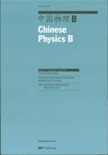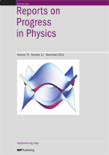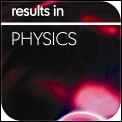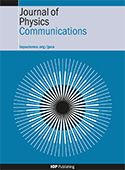
Romanian Journal of Physics
Scope & Guideline
Connecting researchers with groundbreaking findings.
Introduction
Aims and Scopes
- Theoretical Physics:
Focuses on the development of theories and models that explain physical phenomena, including quantum mechanics, relativity, and statistical mechanics. - Applied Physics:
Includes research that applies physical principles to solve practical problems, such as materials science, nanotechnology, and engineering applications. - Experimental Research:
Emphasizes experimental methodologies to validate theories and explore new phenomena, particularly in areas like nuclear physics, condensed matter physics, and optics. - Computational Physics:
Highlights the use of computational methods and simulations to analyze complex physical systems and predict their behavior under various conditions. - Environmental and Geophysical Physics:
Investigates the physical aspects of environmental issues, including climate change, pollution, and seismic activity, particularly relevant to Romania. - Interdisciplinary Studies:
Encourages research that intersects with other scientific fields such as chemistry, biology, and engineering, fostering a holistic understanding of physical sciences.
Trending and Emerging
- Quantum Technologies:
There is a growing emphasis on research related to quantum computing, quantum cryptography, and other quantum technologies, driven by advancements in both theoretical frameworks and experimental capabilities. - Environmental Physics:
Research addressing environmental challenges, including pollution and climate change, has gained importance, especially studies that utilize physical principles to propose solutions. - Machine Learning in Physics:
The integration of machine learning techniques to analyze data and model complex systems is increasingly prevalent, showcasing the intersection of physics with data science. - Nanotechnology and Materials Science:
Innovative studies in nanomaterials and their applications in various fields, such as electronics and medicine, are on the rise, reflecting the importance of materials at the nanoscale. - Interdisciplinary Approaches:
Research that combines physics with biology, chemistry, and engineering is becoming more common, highlighting the need for collaborative approaches to solve complex scientific problems.
Declining or Waning
- Classical Mechanics:
Research focusing solely on classical mechanics concepts has become less prominent, potentially overshadowed by advancements in quantum mechanics and relativistic physics. - Traditional Nuclear Physics:
While still important, traditional studies of nuclear physics without a strong interdisciplinary approach or novel applications are published less frequently. - Basic Material Characterization:
Basic studies on the characterization of materials, without applications or innovative methodologies, seem to be declining, as there is a stronger push towards applied and experimental research. - Static Analytical Methods:
Static or purely analytical approaches that do not incorporate computational or experimental elements are becoming less favored, as the field moves toward more dynamic and practical applications. - Historical Studies:
Research that primarily focuses on historical aspects of physics or retrospective analyses without contemporary relevance appears to be waning.
Similar Journals

Jordan Journal of Physics
Connecting Scholars, Igniting DiscoveriesJordan Journal of Physics is a pivotal scholarly platform published by YARMOUK UNIVERSITY, DEANSHIP RESEARCH & GRADUATE STUDIES, dedicated to the field of physics and its applications. Established in 2008, this journal serves as a crucial avenue for disseminating quality research and insights in various subfields of physics and astronomy. As a publication in the Q4 category per the 2023 metrics, the journal, while currently placed in the lower quartile, offers a unique opportunity for emerging researchers to contribute their findings. With an ISSN of 1994-7607 and a commitment to fostering academic discourse, the Jordan Journal of Physics provides access to original research articles, reviews, and case studies aimed at enriching knowledge and innovation. While it does not presently offer open access, efforts are underway to expand its reach and visibility in the global academic context. Researchers and scholars will find this forum to be an essential resource for advancing their work and connecting with a community dedicated to exploration and understanding of the fundamental principles that govern our universe.

Chinese Physics B
Exploring the depths of physics with open access insights.Chinese Physics B, published by IOP Publishing Ltd, is a distinguished journal in the field of Physics and Astronomy, offering a platform for researchers to disseminate cutting-edge studies and advancements. With an ISSN of 1674-1056 and an E-ISSN of 2058-3834, this journal emphasizes open access, ensuring that groundbreaking research is readily available to a global audience. Reflecting its commitment to quality, Chinese Physics B is categorized in the Q3 quartile (2023) in its subject area and ranks 118 out of 243 among its peers in general physics and astronomy according to Scopus, placing it in the 51st percentile. Publishing since 2008, the journal not only maintains a rigorous peer-review process but also aims to foster collaboration among academics in various physics disciplines. With its base in the United Kingdom, Chinese Physics B remains a crucial resource for those seeking to stay abreast of developments in the diverse world of physics.

REPORTS ON PROGRESS IN PHYSICS
Exploring significant developments in physics since 1934.Reports on Progress in Physics is a prestigious scholarly journal published by IOP Publishing Ltd, based in the United Kingdom. With an illustrious history dating back to 1934, this journal serves as a vital resource for researchers and professionals in the fields of physics and astronomy, offering comprehensive overviews of significant developments in these disciplines. It holds a commendable Q1 classification in both Medicine (miscellaneous) and Physics and Astronomy (miscellaneous) categories, further underscored by its impressive ranking as 4th out of 243 in the general physics and astronomy sector, placing it in the top 2% percentile on Scopus. The journal is dedicated to disseminating high-quality, peer-reviewed articles that facilitate the understanding of complex physical phenomena and their applications. Although it does not currently offer open access options, its rigorous editorial standards ensure that only the most impactful research reaches its wide audience of academics, practitioners, and students, solidifying its role as a cornerstone of knowledge in the physical sciences.

Ukrainian Journal of Physics
Pioneering Research for Tomorrow's InnovationsUkrainian Journal of Physics, published by the Bogolyubov Institute for Theoretical Physics of the National Academy of Sciences of Ukraine, stands as a significant platform for the dissemination of research in the dynamic field of physics. With its ISSN 2071-0186 and E-ISSN 2071-0194, the journal aims to foster academic dialogue and innovation among researchers, professionals, and students alike. Recognized with a Scopus ranking that places it in the 26th percentile, the journal offers an array of contributions spanning various domains, including general physics and astronomy. Although currently categorized in the Q3 quartile for 2023, it seeks to elevate its scholarly impact while providing open access to its contents, facilitating wider availability and engagement. With a commitment to publishing high-quality research from 2007 to 2024, the journal embraces interdisciplinary approaches to physics, making it an invaluable resource for anyone dedicated to advancing their understanding and exploration of physical sciences.

Results in Physics
Where Physics Meets Open Access ExcellenceResults in Physics, an esteemed open-access journal published by ELSEVIER, has been a prominent platform for disseminating cutting-edge research in the field of physics since its establishment in 2011. With its ISSN 2211-3797 and E-ISSN 2211-3797, this journal proudly holds a Q2 ranking in the Physics and Astronomy category for 2023, showcasing its significance and quality within the scientific community. With a remarkable Scopus rank of #28 out of 243 in the general physics and astronomy domain, placing it within the 88th percentile, Results in Physics serves as a vital resource for researchers, professionals, and students alike, fostering a collaborative environment for the advancement of knowledge across various subfields. The journal aims to provide a rapid and unrestricted access to innovative findings, encouraging open scientific dialogue and enhancing the visibility of breakthrough research. Located in the Netherlands at RADARWEG 29, 1043 NX AMSTERDAM, Results in Physics continues to uphold its commitment to excellence and accessibility in the ever-evolving landscape of physics research.

Romanian Reports in Physics
Illuminating the Frontiers of Scientific ResearchRomanian Reports in Physics, an esteemed journal published by EDITURA ACAD ROMANE, serves as a significant platform for disseminating high-quality research in the field of physics and astronomy. With its ISSN 1221-1451 and E-ISSN 1841-8759, this journal, originating from Romania, has gained recognition for its rigorous peer-review process, maintaining an impressive Q2 quartile ranking within the broader category of physics and astronomy for 2023. It ranks 81 out of 243 in the Scopus database, placing it in the 66th percentile, a testament to its growing influence in the academic community. The journal covers a breadth of research topics and is dedicated to fostering knowledge exchange among researchers, professionals, and students. Currently, it is set to continue its publication cycle until 2024, ensuring that it remains a crucial resource for anyone looking to stay updated on the latest advancements in physics and its applications. While the journal currently follows a traditional publication model, it signifies a commendable opportunity for scholars aiming to contribute to the ongoing dialogue in diverse areas of physics.

Journal of Physics Communications
Shaping the Landscape of Physics InnovationJournal of Physics Communications, published by IOP Publishing Ltd, serves as a significant platform for the dissemination of innovative research in the realm of physics and astronomy. Since its inception in 2017, this Open Access journal has fostered a collaborative environment, allowing researchers, professionals, and students to share their findings and ideas without barriers. With an ISSN of 2399-6528, the journal has established its credibility in the academic community, achieving a ranking of Q3 in the 2023 category of Physics and Astronomy (miscellaneous), as well as a respectable position in Scopus with a rank of #122 out of 243 in its field. The journal's focus is on bridging theoretical concepts and practical applications, making it an essential resource for those engaged in the evolving landscape of physics. The Journal of Physics Communications not only aims to advance knowledge but also to inspire interdisciplinary collaboration, inviting contributions from diverse areas within physics. Authors and readers alike will find this journal particularly beneficial to stay updated on emerging trends and innovative research.

REVISTA MEXICANA DE FISICA
Empowering Scientific Discourse in Physics and AstronomyREVISTA MEXICANA DE FISICA is a prominent academic journal dedicated to advancing knowledge in the fields of Physics and Education. Published by the SOC MEXICANA FISICA, this journal plays a pivotal role in disseminating innovative research and educational methodologies from Mexico and beyond. With a publication history that spans from 1991 to 2024, it has established itself as an essential resource for researchers, professionals, and students who seek to deepen their understanding of general physics and astronomy. The journal is classified in the Q3 quartile in both education and physics & astronomy, showcasing its quality and relevance within the academic landscape. While the journal currently operates on a subscription basis, it provides a valuable platform for emerging voices and established scholars alike. By fostering a collaborative environment for scientific discourse, REVISTA MEXICANA DE FISICA continues to be an important channel for the ongoing evolution of scientific education and exploration in the physical sciences.

PRAMANA-JOURNAL OF PHYSICS
Connecting Scholars through Groundbreaking Physics ResearchPRAMANA-JOURNAL OF PHYSICS, published by the esteemed Indian Academy of Sciences, serves as a pivotal platform for disseminating high-quality research in the field of Physics and Astronomy. Established in 1973, this journal aims to promote significant findings in various branches of physics, encapsulating both theoretical and experimental research. With a solid reputation reflected in its Q2 ranking in the Physics and Astronomy (miscellaneous) category and a commendable 94/243 rank in the Scopus database, PRAMANA stands at the forefront of the academic community. Researchers, professionals, and students benefit from its accessible compilation of innovative studies, contributing richly to the scholarly discourse. The journal, operating from its base in Bangalore, India, is committed to advancing knowledge through rigorous peer-reviewed articles, ensuring that all contributions hold merit in expanding our understanding of the physical world.

Bulletin of the Lebedev Physics Institute
Unveiling the universe through collaborative research.Bulletin of the Lebedev Physics Institute is a peer-reviewed journal dedicated to advancing the field of physics and astronomy, published by PLEIADES PUBLISHING INC. With a print ISSN of 1068-3356 and an e-ISSN of 1934-838X, this journal has been an essential platform for disseminating significant research findings since its inception in 2009. It continues to provide insight into various areas of general physics and astronomy, and consistently aims to foster innovative discussions among researchers and scholars. Although currently positioned in the Q4 category within the 2023 Scopus rankings, it serves a vital role in linking emerging trends with established research, catering to a global audience seeking to explore complex concepts within the field. By contributing to the body of knowledge, the Bulletin supports academic growth and collaboration across diverse sectors. Despite its challenges in ranking, the journal’s unique perspectives and ongoing publications underscore its commitment to pushing the boundaries of scientific inquiry in the United States and beyond.